Classroom in Bloom: Growing the locavores of tomorrow
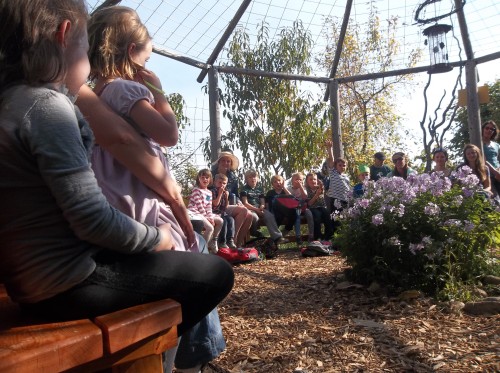
Hot. Dry. Dusty. A perfect description for the Methow Valley, an area currently in a severe drought. So it was rather surprising then when the new graduate cohort arrived to the Methow Elementary School to see an oasis of a garden in full bloom!
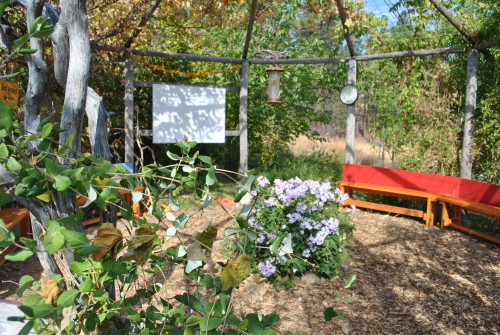
Learning circle space in the middle of the garden.
Part of our Graduate Program curriculum is to study local environmental education programs for examples of how we can give students different educational experiences. Classroom in Bloom is a nonprofit founded in 2004 that works with the Methow Elementary School to provide curriculum to the students based on growing food. The actual garden is located 100 yards away from the school, making transfer of students and food back and forth as easy as running outside for recess.
Kate Posey, the Executive Director of CiB, met with us first thing in the morning to explain that that day was Local Food Lunch and the students’ “farmer’s market” day. With that half of the cohort went to go help the fourth grade class with their market, while the other half went to wash carrots.
While washing the carrots, Kate explained that not only does this garden provide a space for students to learn hands-on experience, but it also produces food that the students eat. Two Thousand pounds worth each year. We were washing carrots that were planted, harvested, and soon to be eaten by the students. How much more local could you get?
As we finished up, it was time to go to lunch in the cafeteria, with food provided not only from the garden but also local growers in the valley.
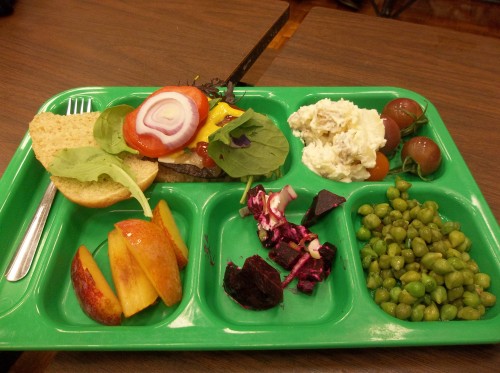
The colorful local school lunch.
That day was the start of farm to school month, and what a spectacular start it was! We walked into a bustling lunchroom filled with students and some of their family members. Everyone was chowing down a colorful meal that beat out any elementary lunch that I ate at that age.
At each one of the tables was also a card informing us where all of the food came from.
Local Food Lunch Featuring:
- Gebbers Cattle Beef
- Bluebird Grain Farms Four
- Tomatoes from Smallwood Farms
- Greens from Plow Horse Produce
- Sunny Pine Goat Cheese
- Classroom in Bloom grown: Tomatoes, Corn, Potatoes, Herbs, Peppers, Beets, Onions, Garlic
- Tomlinson Farms Pluots for dessert.
We then sped outside to help the second graders with their market.
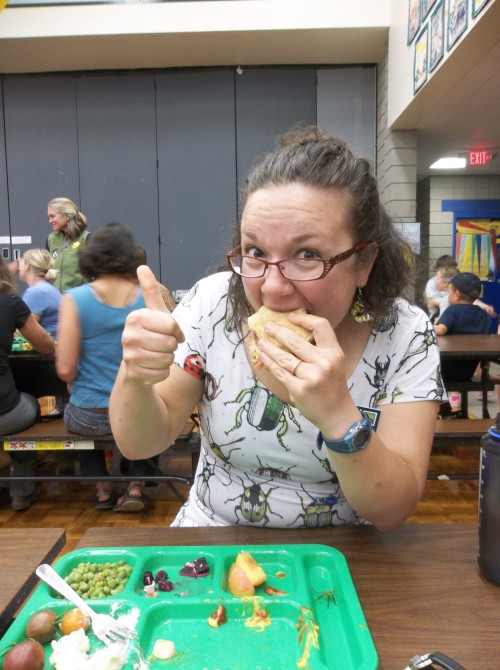
C15’s Holli “The Bug-Lady” Watne enjoying the local cuisine.
It was now my turn to help out with the famer’s market. Each student was assigned to one of four tables: fruit, roots and bulbs, nightshade, and brassicas and cucurbits. The students were to stay at that table and practice making transactions with customers (parents and other special guests) who had pretend money. As a class they brainstormed what they would learn from doing this:
- Knowledge of the produce in your section
- People skills with talking to customers
- Math skills with calculating the cost of the purchase, along with making change
They then went to their separate tables and awaited their customers. Since we had plenty of parents to shop, I was asked to help out at the nightshade group.
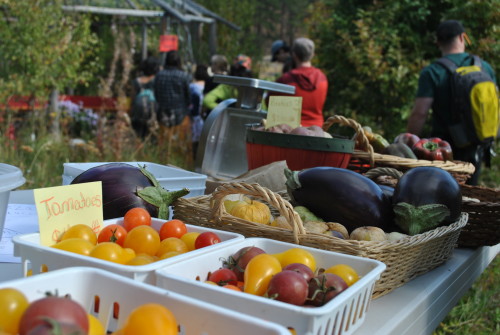
The “nightshade” table at the farmer’s market.
With calculators, a scale, paper, and a whole lot of produce, the nightshade group did a fantastic job! Each one of them was involved with every purchase. While not the most efficient, they were all learning from one another with lines like “wait, should we give him change?” and “how do you read a scale again?” Every question asked was answered by another student.
After a busy 20 minutes, they then came back and talked about the experience (while having a snack from the garden of course). Each group had experienced the bonding and learning that I saw at the nightshade table. The other instructors, Annie and Emily, tied this experience to the Local Food Lunch and why it is important to eat locally when possible.
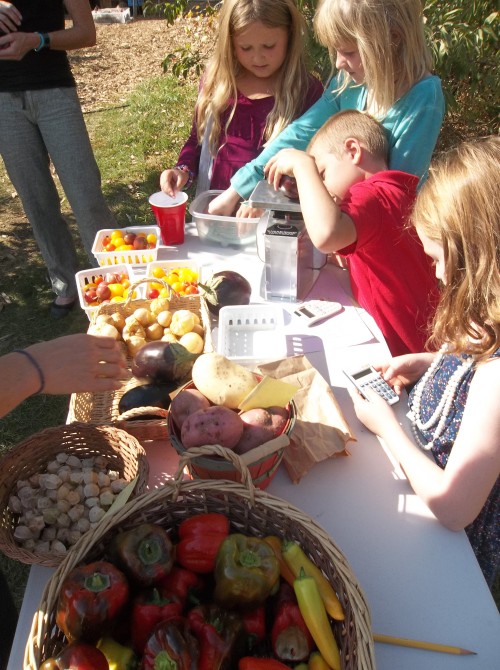
Second Graders measuring the harvest at the mock farmer’s market.
Our day ended with the Kindergarteners’ story and snack time. Since they are not quite ready to run a farmer’s market, Annie had a conversation about local food, farmer’s markets, and what the older kids had been doing all day with them. She finished the conversation with the book “Market to Market” and of course snacks from the garden.
At least in the Methow Valley, the locavores of tomorrow are in good hands.
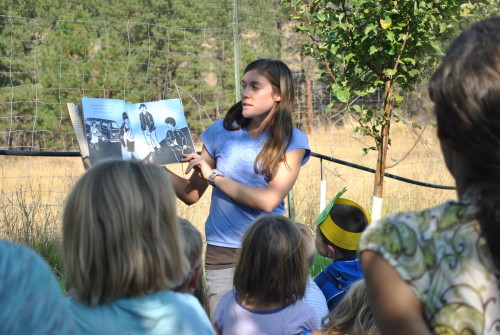
Annie reading “Market to Market” to the Kindergarteners.
(You can follow what CiB is up to here).

